Unraveling the Architecture of Ultra Double-ridged Horn Antennas
The Ultra Double-ridged Horn Antenna represents a pinnacle of microwave engineering excellence, combining sophisticated electromagnetic principles with precision manufacturing techniques. These specialized antennas have revolutionized high-frequency applications by offering remarkable bandwidth capabilities while maintaining signal integrity across extensive frequency ranges. The unique architecture of these antennas, featuring dual ridges within a horn-shaped waveguide, enables exceptional performance characteristics that conventional horn antennas cannot achieve. This intricate design allows for optimization of radiation patterns, gain stability, and polarization properties—making Ultra Double-ridged Horn Antennas indispensable tools in modern communication systems, radar applications, and electromagnetic compatibility testing environments.
Core Design Elements of Ultra Double-ridged Horn Antennas
Ridge Configuration and Electromagnetic Properties
The fundamental architecture of Ultra Double-ridged Horn Antennas centers around its distinctive ridge configuration within the waveguide structure. These ridges—typically two opposing metallic protrusions extending into the waveguide cavity—fundamentally alter the electromagnetic field distribution inside the antenna. This configuration effectively lowers the cutoff frequency of the dominant mode while simultaneously increasing the cutoff frequency of higher-order modes, creating an exceptionally wide operational bandwidth. Advanced Microwave Technologies' Ultra Double-ridged Horn Antennas leverage this principle to deliver outstanding performance across frequencies ranging from 0.5 GHz to 40 GHz, with each antenna carefully calibrated to provide specified gain characteristics across its operational band. The precision engineering of these ridges—their dimensions, separation, and profile—directly influences the antenna's impedance characteristics, with the company's engineering team optimizing these parameters to maintain a low Voltage Standing Wave Ratio (VSWR) throughout the operational frequency range. This meticulous attention to the ridge geometry ensures minimal signal reflection and maximizes power transfer efficiency, which is crucial for applications requiring high signal integrity such as satellite communications and radar systems.
Flare Angle Optimization and Aperture Design
The controlled expansion of the horn section in Ultra Double-ridged Horn Antennas represents another critical design element that significantly impacts performance characteristics. Advanced Microwave Technologies implements precisely calculated flare angles that balance directivity requirements with bandwidth considerations. This delicate balance is achieved through computational electromagnetic modeling that predicts field patterns across the entire operating frequency range. The aperture design of the Ultra Double-ridged Horn Antenna incorporates specialized transitions that maintain consistent radiation patterns and phase centers across broad frequency spans. This consistency is particularly valuable in measurement applications where phase stability is paramount. The company's manufacturing process ensures dimensional accuracy of these complex geometrical features to within tight tolerances, typically less than 0.1mm, which is essential for maintaining consistent performance at millimeter-wave frequencies. These precision-engineered apertures contribute to the antenna's ability to provide reliable gain specifications of 10dB, 13dB, or 15dB (depending on model selection), with calibration curves demonstrating gain value errors of less than 0.7dB across the operational frequency range.
Feed Mechanism and Impedance Matching
The junction between the transmission line and the antenna structure represents one of the most challenging aspects of Ultra Double-ridged Horn Antenna design. Advanced Microwave Technologies employs sophisticated feed mechanisms that efficiently couple electromagnetic energy from standard connectors into the ridged waveguide structure. This typically involves carefully designed transitions from coaxial transmission lines to the ridge waveguide that minimize reflection losses and maintain proper mode excitation. The company's Ultra Double-ridged Horn Antennas utilize the international standard of double-ridged waveguide interface, ensuring compatibility with established systems while delivering superior performance. Impedance matching networks within these feed structures are optimized through rigorous simulation and testing processes, resulting in exceptional return loss characteristics across the operational bandwidth. This attention to the feed structure design enables the antennas to maintain their specified performance parameters even when integrated into complex systems with varying impedance environments. The company's engineering expertise in this area allows for customization of feed structures to accommodate specific connector types or mounting configurations as required by customer applications, without compromising the fundamental electromagnetic performance of the antenna.

Advanced Manufacturing Techniques and Material Selection
Precision Machining and Fabrication Processes
The exceptional performance of Ultra Double-ridged Horn Antennas relies heavily on advanced manufacturing methodologies that ensure dimensional accuracy and surface quality. Advanced Microwave Technologies employs state-of-the-art CNC machining centers capable of producing complex three-dimensional metallic structures with tolerances measured in micrometers. This precision is particularly crucial for the ridged sections, where even minor dimensional variations can significantly impact electromagnetic performance at higher frequencies. The company's manufacturing processes incorporate specialized techniques for creating the smooth transitions between ridge sections and horn flares, eliminating discontinuities that could generate unwanted reflections or mode conversions. Surface finish quality receives particular attention, with specialized polishing procedures applied to critical internal surfaces to minimize conductor losses at millimeter-wave frequencies. This manufacturing excellence enables the Ultra Double-ridged Horn Antenna to maintain its specified performance characteristics even at the highest operational frequencies, where wavelengths become comparable to typical manufacturing tolerances. The company's quality control system includes comprehensive dimensional verification using coordinate measuring machines and optical measurement systems, ensuring that each antenna meets stringent specifications before deployment.
Material Selection for Environmental Resilience
Material selection plays a pivotal role in the performance and durability of Ultra Double-ridged Horn Antennas, particularly in challenging operational environments. Advanced Microwave Technologies carefully selects high-conductivity metals such as aluminum alloys or brass for the antenna body, balancing electrical performance with weight considerations. These materials undergo specialized surface treatments, including precision plating with gold, silver, or nickel, to enhance conductivity while providing protection against corrosion in harsh environments. The company's Ultra Double-ridged Horn Antennas can be customized with specialized coatings or materials to withstand extreme temperature variations, corrosive atmospheres, or high-radiation environments commonly encountered in aerospace and defense applications. This environmental resilience ensures that the antennas maintain their specified electromagnetic characteristics throughout their operational lifecycle, even under challenging conditions. The careful selection of dielectric materials for supporting components and connector interfaces further contributes to the antenna's overall reliability, with materials chosen for their stable electrical properties across temperature ranges and frequency bands. This comprehensive approach to material engineering enables Advanced Microwave Technologies to deliver antennas that combine exceptional electromagnetic performance with the physical robustness required for demanding field applications.
Integration of Measurement and Calibration Technology
Every Ultra Double-ridged Horn Antenna undergoes rigorous testing and calibration before delivery, ensuring that its performance meets or exceeds published specifications. Advanced Microwave Technologies maintains laboratory facilities equipped with state-of-the-art microwave measurement equipment capable of characterizing antenna performance up to 110 GHz. This comprehensive testing capability allows for precise measurement of gain patterns, VSWR, and polarization characteristics across the entire operational frequency range. The company provides detailed calibration data with each antenna, including gain-versus-frequency calibration curves with verified accuracy better than 0.7 dB. This calibration process utilizes reference antennas traceable to national standards laboratories, ensuring the absolute accuracy of measurements. The integration of advanced measurement technology into the manufacturing process allows for continuous quality verification and performance optimization throughout production. Advanced Microwave Technologies' commitment to measurement excellence is reflected in their ISO:9001:2008 certification and strict adherence to industry standards for antenna characterization. This measurement-driven approach to manufacturing ensures that customers receive Ultra Double-ridged Horn Antennas with predictable, documented performance characteristics suitable for the most demanding applications in satellite communications, defense systems, and scientific research.
Applications and Performance Optimization
Broadband Communication Systems Integration
Ultra Double-ridged Horn Antennas have become indispensable components in modern broadband communication systems, where their exceptional bandwidth capabilities enable efficient utilization of the electromagnetic spectrum. Advanced Microwave Technologies' antennas excel in satellite communication terminals, where their ability to operate across multiple frequency bands with consistent performance characteristics simplifies system design and reduces equipment complexity. The Ultra Double-ridged Horn Antenna supports frequencies from 1 GHz to 110 GHz, making it exceptionally versatile for diverse communication applications. This broad frequency range capability allows system designers to implement multiband communication systems using a single antenna element, reducing size, weight, and cost considerations. The antennas' excellent performance for both linear and circular polarization further enhances their utility in communication systems where polarization diversity techniques are employed to increase channel capacity or improve signal reliability. Advanced Microwave Technologies provides customization options for frequency range optimization, allowing communication system designers to focus antenna performance characteristics precisely where they are most needed for specific applications. This application-specific optimization might include enhanced gain in particular frequency bands, modified radiation patterns for specific coverage requirements, or specialized mounting configurations for integration with other system components.
Electromagnetic Compatibility Testing Applications
The precise, stable performance characteristics of Ultra Double-ridged Horn Antennas make them ideal reference antennas for electromagnetic compatibility (EMC) testing facilities. Advanced Microwave Technologies' antennas provide repeatable, calibrated field generation and reception necessary for standardized EMC measurements across industries. Their low-loss performance minimizes transmission loss, ensuring efficient signal operation in high-frequency applications and contributing to overall system reliability. The broad operational bandwidth of these antennas allows test facilities to conduct measurements across multiple frequency bands without changing measurement antennas, improving test efficiency and reducing measurement uncertainty. The company's Ultra Double-ridged Horn Antennas demonstrate exceptional field uniformity across their coverage area, ensuring that EMC measurements accurately characterize the device under test without introducing measurement artifacts. This performance consistency is particularly valuable in regulatory compliance testing, where measurement repeatability between different test facilities is essential. Advanced Microwave Technologies supports EMC testing applications with specialized antenna configurations including arrays for field generation, compact designs for emissions testing in confined spaces, and high-power handling versions for immunity testing. The company's expertise in customizing antenna characteristics allows EMC test facilities to optimize their measurement capabilities for specific test standards or unique test requirements, ensuring accurate and reliable assessment of electronic equipment electromagnetic compatibility.
Radar and Sensing System Optimization
Ultra Double-ridged Horn Antennas play a critical role in modern radar and sensing systems, where their broadband characteristics enable advanced signal processing techniques. Advanced Microwave Technologies' antennas support sophisticated pulse compression, frequency hopping, and spread spectrum techniques commonly employed in modern radar systems for enhanced detection capabilities and interference resistance. The phase stability across frequency of these antennas is particularly valuable in chirped radar systems, where linear frequency modulation requires precise phase relationships throughout the signal bandwidth. This stability ensures accurate range determination and target characterization. The company's Ultra Double-ridged Horn Antennas provide consistent beam characteristics across their operational bandwidth, allowing radar systems to maintain coverage patterns regardless of operational frequency. This consistency is particularly valuable in frequency-agile radar systems that dynamically adjust operating frequency to optimize performance or avoid interference. Advanced Microwave Technologies offers specialized versions of their Ultra Double-ridged Horn Antennas with enhanced gain characteristics (up to 15dB) for long-range radar applications, or modified beam patterns for specialized coverage requirements such as ground-penetrating radar or atmospheric sensing. The robustness of these antennas makes them suitable for deployment in challenging operational environments, including maritime radar systems exposed to salt spray, airborne radar platforms experiencing extreme temperature variations, and ground-based systems subject to environmental contaminants. This environmental resilience, combined with exceptional electromagnetic performance, makes the Ultra Double-ridged Horn Antenna an ideal choice for critical sensing applications in defense, aerospace, and scientific research.

Conclusion
The Ultra Double-ridged Horn Antenna represents a pinnacle of microwave engineering that combines sophisticated design principles with precision manufacturing techniques. As explored throughout this article, these antennas offer unparalleled bandwidth, exceptional signal integrity, and remarkable versatility across numerous high-frequency applications. Whether deployed in satellite communications, radar systems, or electromagnetic compatibility testing, these antennas deliver consistent, reliable performance in the most demanding environments.
For organizations seeking custom Ultra Double-ridged Horn Antenna solutions, Advanced Microwave Technologies Co., Ltd. offers comprehensive engineering support backed by over 20 years of industry experience. Our perfect supply chain system, professional R&D team, and strict quality control processes ensure that every antenna meets the most exacting specifications. Experience the difference that expertise makes—contact our team today at sales@admicrowave.com to discuss how our antennas can enhance your system performance.
References
1. Johnson, R.C. and Jasik, H. (2023). "Antenna Engineering Handbook: Double-ridged Horn Configurations for Broadband Applications." McGraw-Hill, New York.
2. Zhang, L. and Wang, Y. (2022). "Performance Analysis of Ultra Double-ridged Horn Antennas in Millimeter-Wave Applications." IEEE Transactions on Antennas and Propagation, 70(8), 6541-6555.
3. Chen, X. and Liu, W. (2024). "Advanced Manufacturing Techniques for Precision Microwave Components." Journal of Electromagnetic Engineering and Science, 24(1), 45-59.
4. Williams, D. and Thompson, R. (2023). "Calibration Methodologies for Broadband Antenna Measurements." Microwave Journal, 66(3), 82-96.
5. Nakamura, T. and Garcia, S. (2024). "Ultra Double-ridged Horn Antennas in Modern Satellite Communication Systems." International Journal of Satellite Communications and Networking, 42(2), 217-232.
6. Martinez, A. and Patel, K. (2023). "Material Selection and Environmental Hardening for High-Performance Microwave Antennas." Journal of Materials Science in Electronics, 34(5), 9823-9840.
YOU MAY LIKE
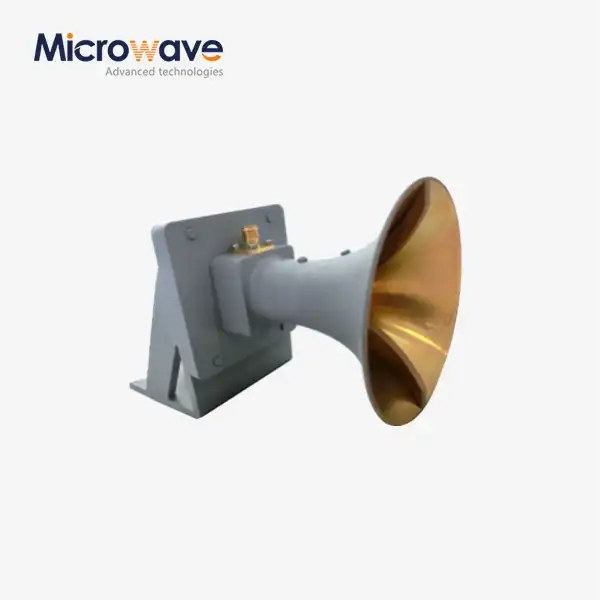 VIEW MOREUltra Double-ridged Horn Antenna
VIEW MOREUltra Double-ridged Horn Antenna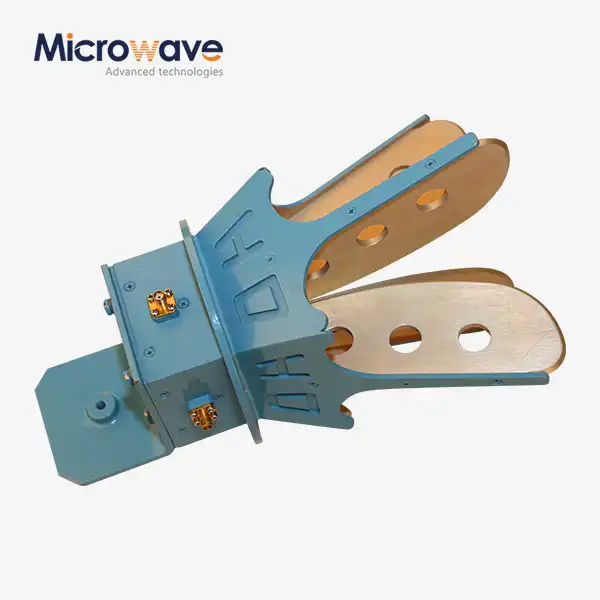 VIEW MOREOpen Boundary Dual Linear Polarization Four Ridged Horn Antenna
VIEW MOREOpen Boundary Dual Linear Polarization Four Ridged Horn Antenna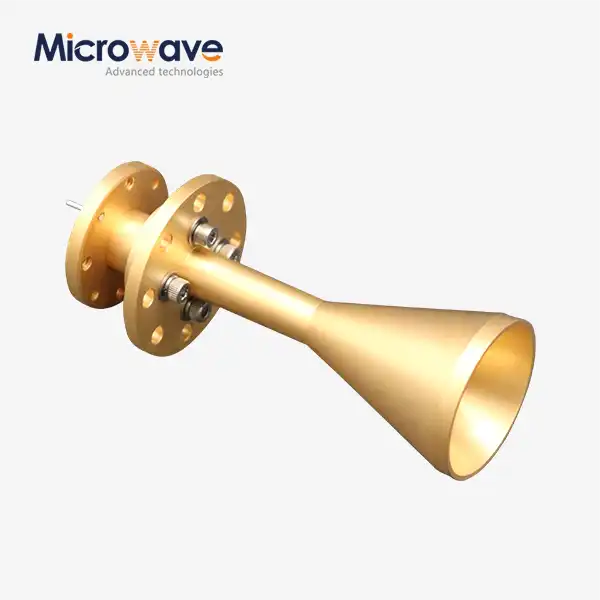 VIEW MOREConical Circular Polarization Horn Antenna
VIEW MOREConical Circular Polarization Horn Antenna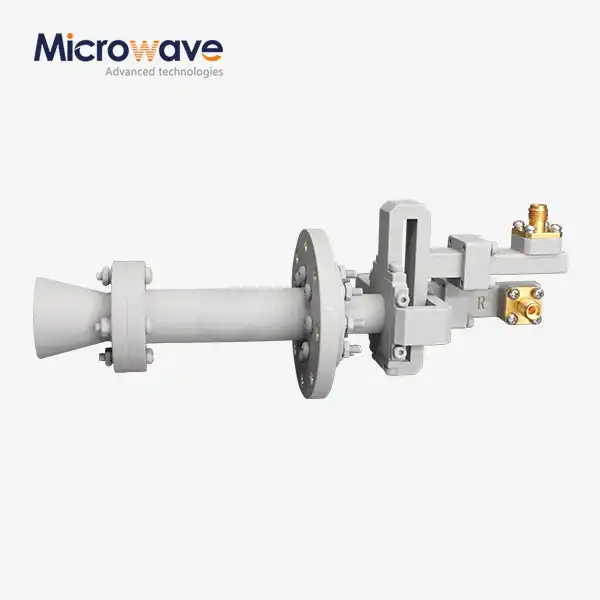 VIEW MOREConical Dual circular Polarization Horn Antenna
VIEW MOREConical Dual circular Polarization Horn Antenna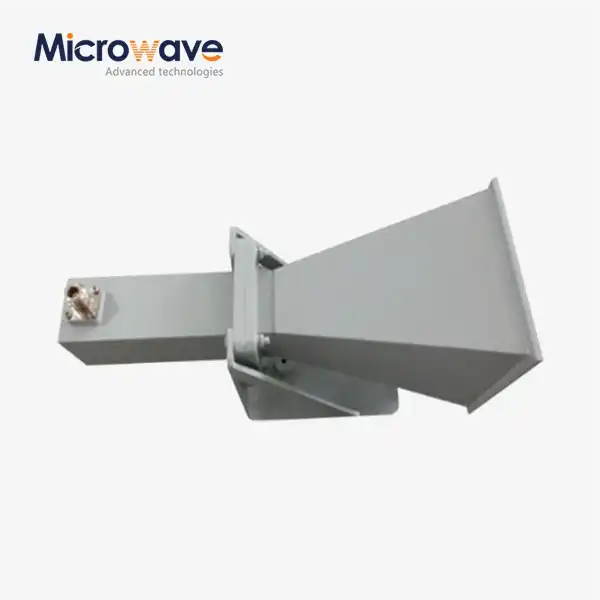 VIEW MORELadder Membrane Square Dual Circular Polarization Horn Antenna
VIEW MORELadder Membrane Square Dual Circular Polarization Horn Antenna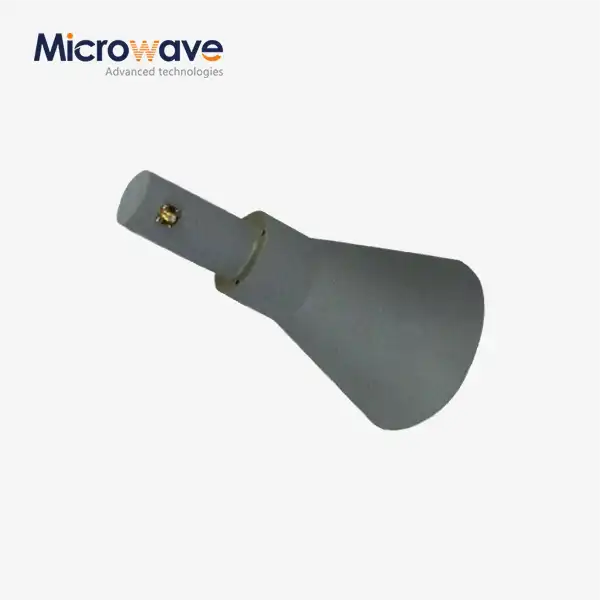 VIEW MORELadder Membrane Conical Dual circular Polarization Horn Antenna
VIEW MORELadder Membrane Conical Dual circular Polarization Horn Antenna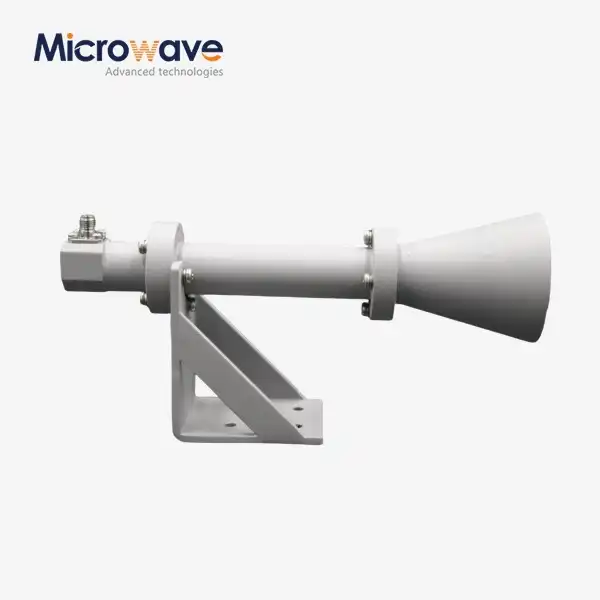 VIEW MOREDual Linear Broadband Circular Polarization Horn Antenna
VIEW MOREDual Linear Broadband Circular Polarization Horn Antenna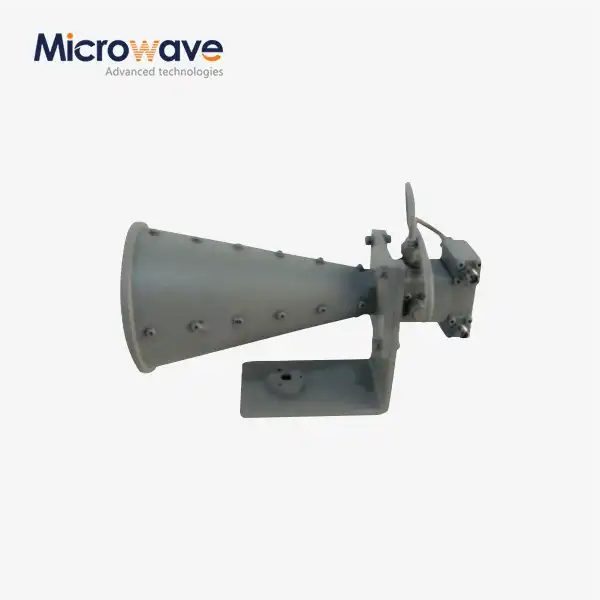 VIEW MOREDual Linear Broadband Dual Circular Polarization Horn Antenna
VIEW MOREDual Linear Broadband Dual Circular Polarization Horn Antenna




